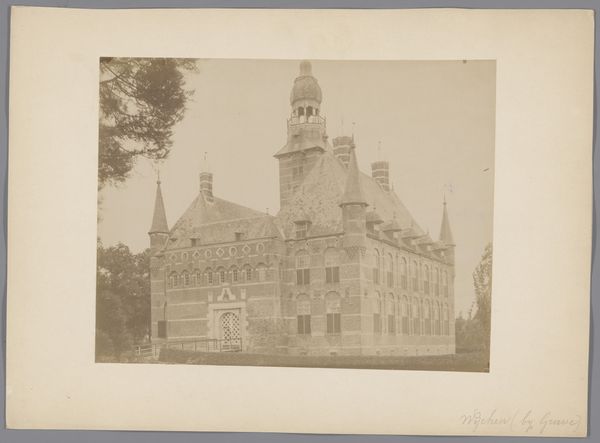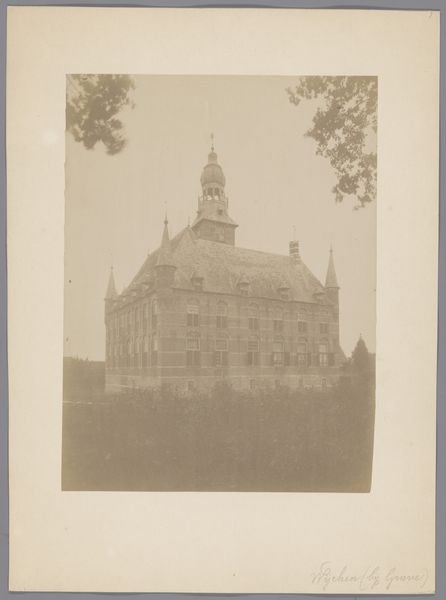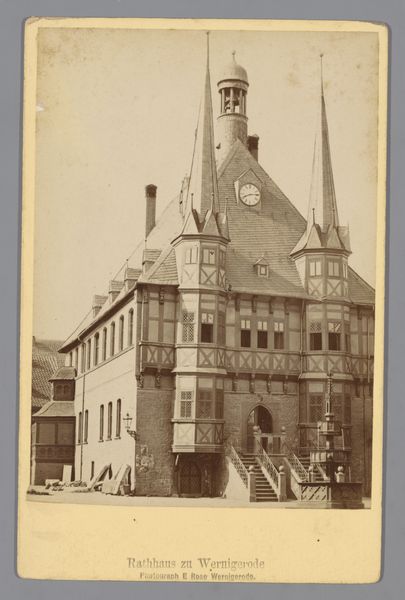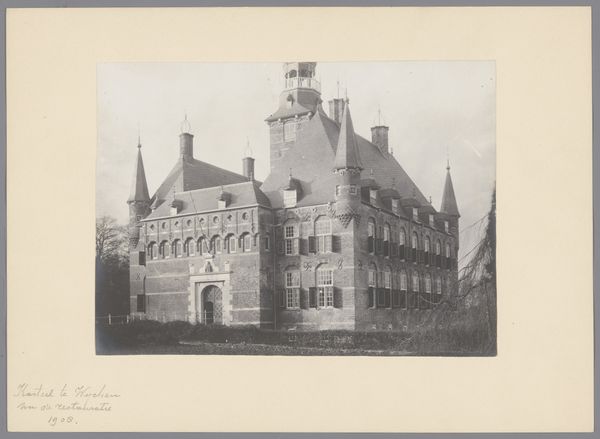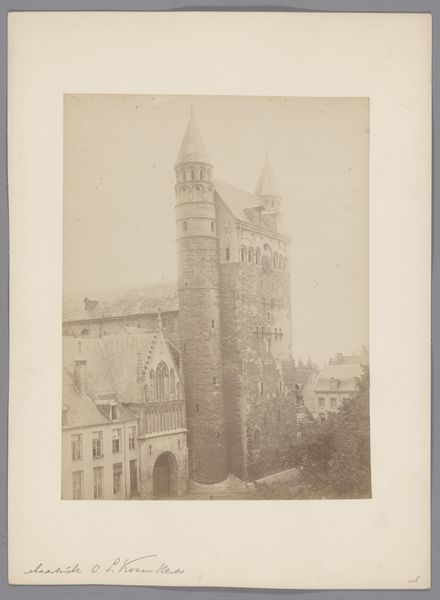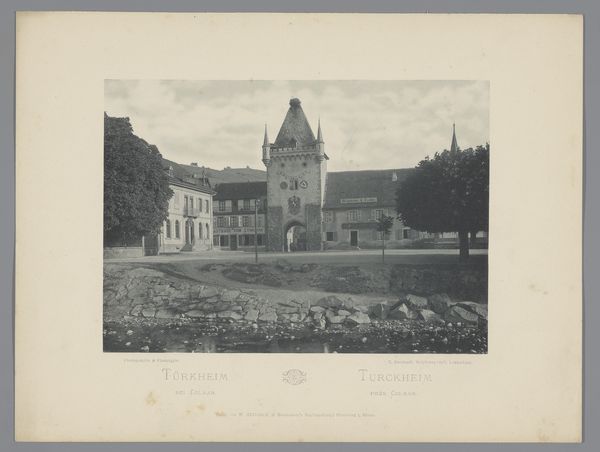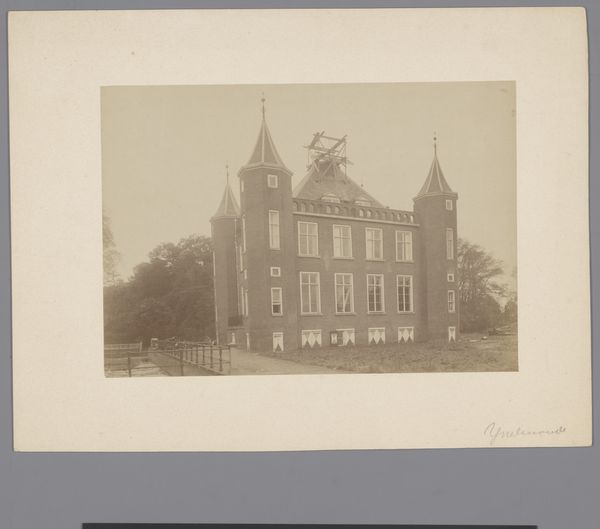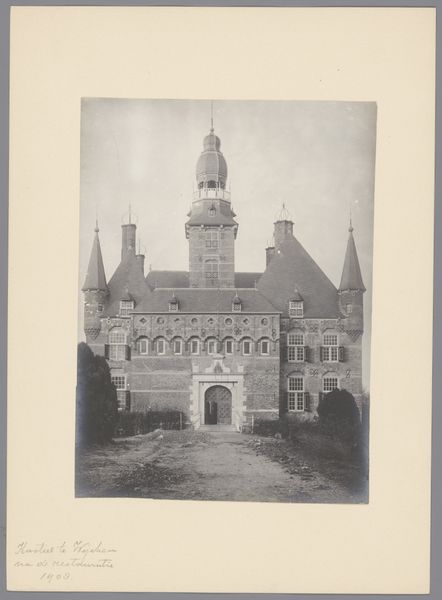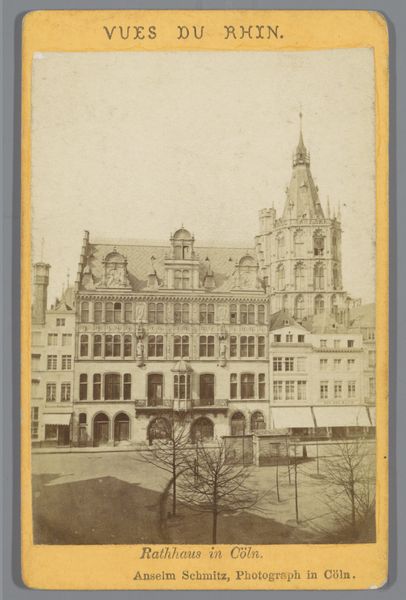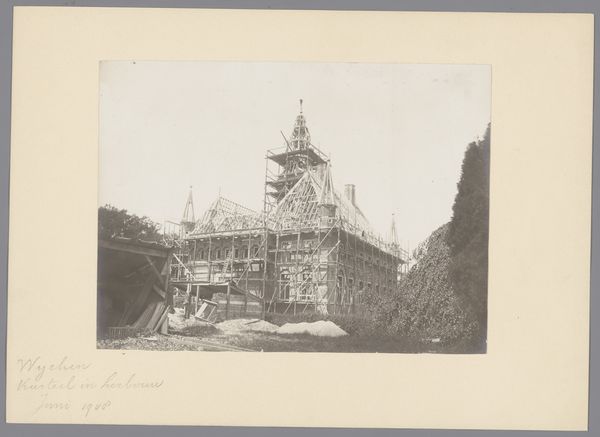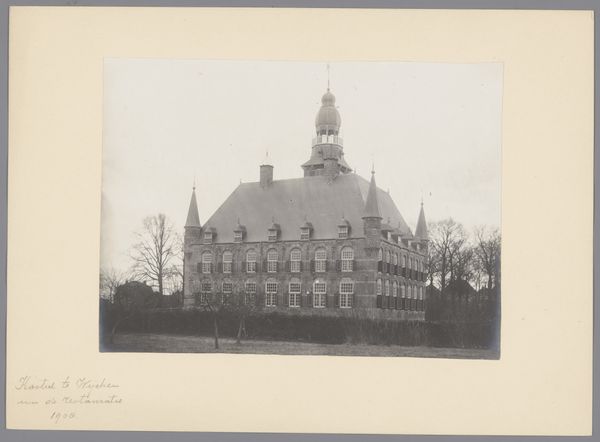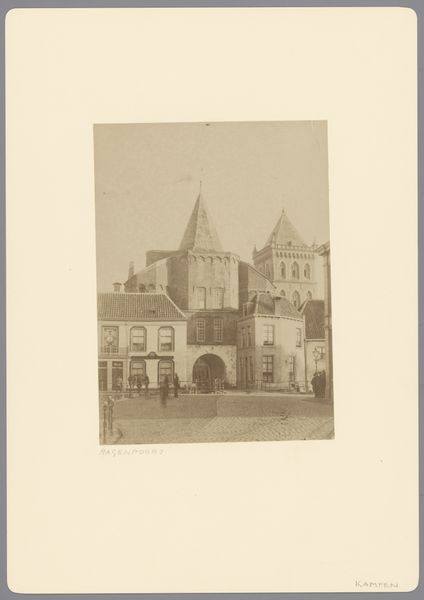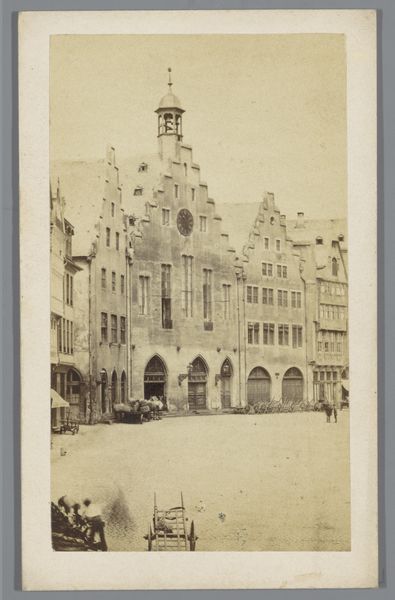
print, photography, albumen-print
# print
#
landscape
#
photography
#
cityscape
#
albumen-print
#
realism
Dimensions: height 279 mm, width 225 mm
Copyright: Rijks Museum: Open Domain
Curator: Allow me to introduce “Gezicht op het Kasteel van Wijchen,” an albumen print dating from around 1875 to 1900 by Johannes Gerardus Kramer. Editor: It has a melancholy mood; there’s something solid yet subdued about it. It looks impenetrable, yet I’m also getting a slight fairy-tale atmosphere because of that spire and turret. Curator: Fascinating observation. Albumen prints were common then, basically the standard photographic print. But albumen itself – derived from egg whites – is significant, pointing to the laborious processes behind photographic production, which connects to a wider industry that involves waste products like eggs in innovative applications. Editor: Indeed. Eggs representing a beginning, in many cultural myths; something protected. Look at how that one prominent tower asserts itself while those barred windows hint at a kind of psychological entrapment. What associations would the Wijchen Castle have evoked at the time the photograph was created, do you think? Curator: Castles were shifting away from defense to evoke historic, almost folkloric senses of local tradition; this photograph makes us conscious of how architecture was consumed then. Think of the craftsmanship involved—from preparing the photographic plates to carefully laying out this scene and even consider the economic status needed for someone to want this kind of architectural subject made in print. Editor: Yes! Also consider how light plays across the castle; those deep shadows imply power and resilience. Perhaps the intent was to convey endurance – both in terms of stone structure but also the concept of cultural identity over time? Curator: Precisely. These photographers had real material considerations – supplies, distribution networks; how did they engage, and get commissions from different levels of society and institutions? Editor: The albumen print, therefore, has the peculiar duality: while representing this formidable stone edifice, it too captures subtle details from the era. Now I'm imagining other stories connected to Wijchen Castle which, like many historic sites, continues to be infused with tales, superstitions, and memories both true and fabricated. Curator: Very well, our exploration has shed light not only on the materiality and making of the piece itself but its inherent socioeconomic layers too. Editor: Exactly; a simple look at one particular photograph sparks layers of deeper meaning, about symbolic resilience alongside hidden realities of an architectural period piece.
Comments
No comments
Be the first to comment and join the conversation on the ultimate creative platform.
